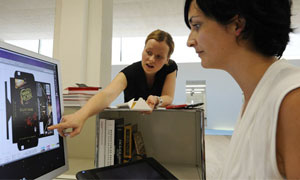Last week Nestlé gathered international experts at a global workshop to advance sustainability in product design and packaging.
The five day event at the Art Center College of Design in Pasadena, California brought together college academics, independent sustainability specialists and members of Nestlé’s Global Research and Development (R&D), Brand Communication and Product Design networks.
Embedding sustainability into designers’ thinking from the beginning of the design process was the aim of the workshop.
Current sustainability initiatives at Nestlé was one of the topics to be discussed. Challenges facing the consumer goods industry as a whole, and the latest design practices was another highlighting point.
Besides, experts made an investigation of how current consumer and design trends might lead to opportunities for the company to develop more sustainable products, services and systems.
Within its R&D network, Nestlé assisted by independent external consultants systematically examines the environmental impact of its products; from ingredient sourcing, to processing, manufacturing, consumer use of the product and its packaging.
The company also uses a range of simplified eco-design tools such as the Packaging Impact Quick Evaluation Tool (PIQET) developed by the Sustainable Packaging Alliance—to produce relevant life cycle data much earlier on in the product development process. These tools can quickly provide Nestlé’s designers with the information required to create new product designs, or to renovate existing ones to reduce their environmental impact.
The Nestlé Global Product Design network links almost 30 designers from France, Germany, China, Singapore and the United States to name a few.